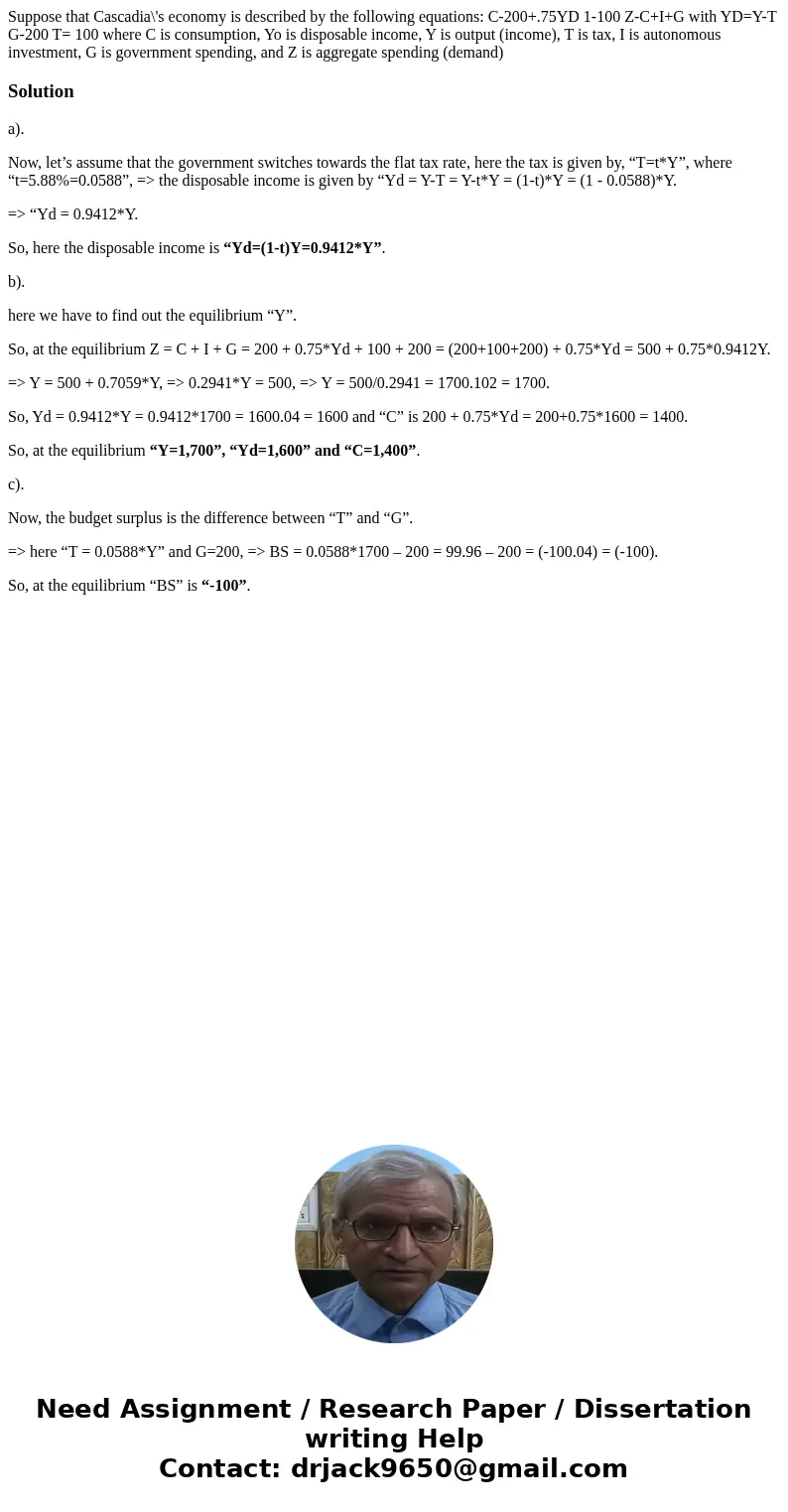Suppose that Cascadias economy is described by the following
Solution
a).
Now, let’s assume that the government switches towards the flat tax rate, here the tax is given by, “T=t*Y”, where “t=5.88%=0.0588”, => the disposable income is given by “Yd = Y-T = Y-t*Y = (1-t)*Y = (1 - 0.0588)*Y.
=> “Yd = 0.9412*Y.
So, here the disposable income is “Yd=(1-t)Y=0.9412*Y”.
b).
here we have to find out the equilibrium “Y”.
So, at the equilibrium Z = C + I + G = 200 + 0.75*Yd + 100 + 200 = (200+100+200) + 0.75*Yd = 500 + 0.75*0.9412Y.
=> Y = 500 + 0.7059*Y, => 0.2941*Y = 500, => Y = 500/0.2941 = 1700.102 = 1700.
So, Yd = 0.9412*Y = 0.9412*1700 = 1600.04 = 1600 and “C” is 200 + 0.75*Yd = 200+0.75*1600 = 1400.
So, at the equilibrium “Y=1,700”, “Yd=1,600” and “C=1,400”.
c).
Now, the budget surplus is the difference between “T” and “G”.
=> here “T = 0.0588*Y” and G=200, => BS = 0.0588*1700 – 200 = 99.96 – 200 = (-100.04) = (-100).
So, at the equilibrium “BS” is “-100”.

 Homework Sourse
Homework Sourse